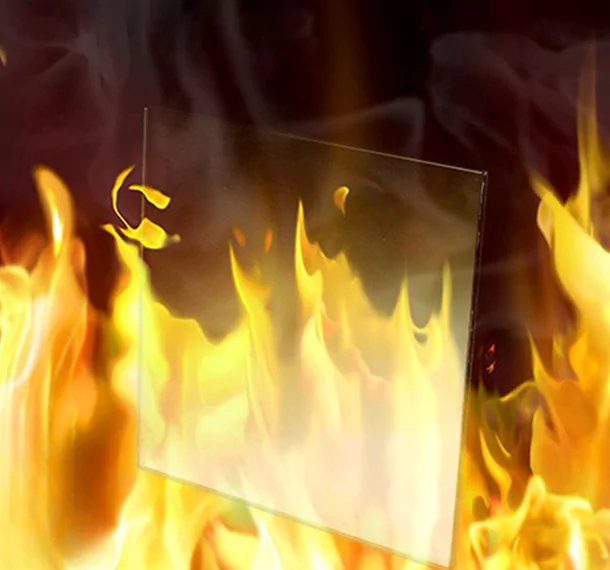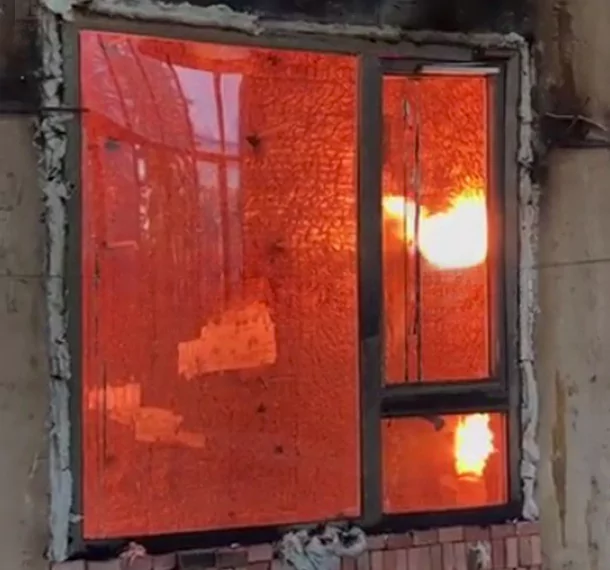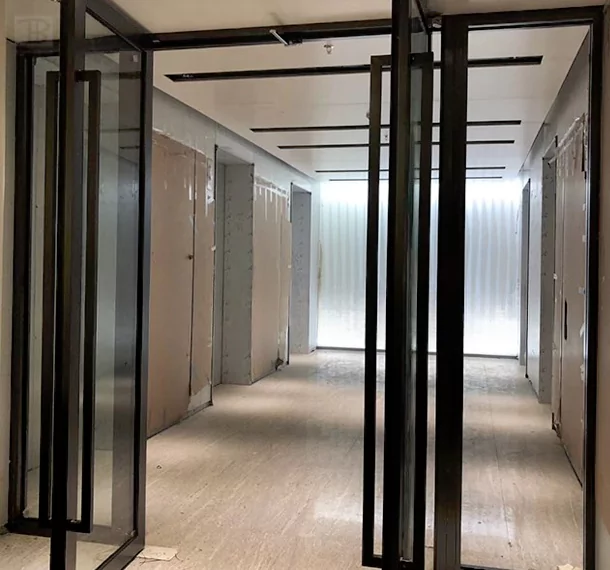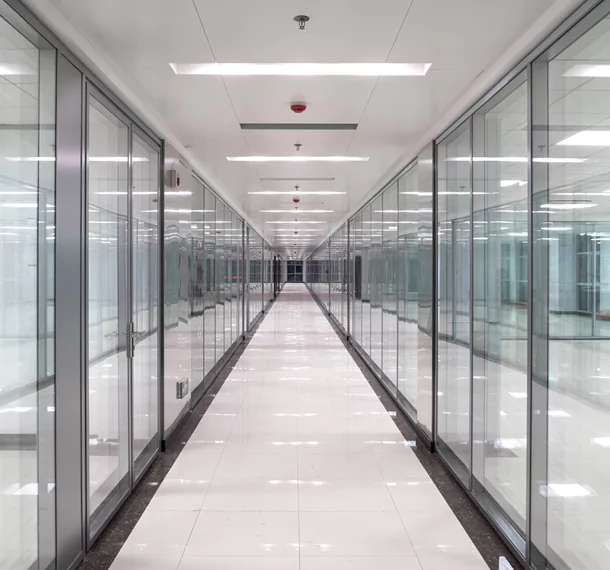
SINGLE LAYER FIRE-RATED GLASS
Learn more
DOUBLE LAYERS FIRE-RATED GLASS
Learn more
FIREPROOF GLAZING WINDOWS AND DOORS
Learn more




Fire rated glass, often referred to as fireproof or fire resistant glass, is a specialized type of glazing designed to withstand high temperatures and prevent the spread of fire and smoke within buildings. unlike traditional glass, which can shatter under heat, fire rated glass incorporates materials that enhance its durability against flames. this unique feature makes it an essential component in modern architectural design where safety regulations demand stringent measures for fire protection in Monrovia.
There are several types of fire rated glass available on the market today. these include tempered glass, laminated glass, and multi-layered systems that combine various materials to achieve specific performance criteria. tempered fire rated glass undergoes a thermal treatment process that increases its strength and resistance to thermal stress. laminated fire resistant glass consists of multiple layers bonded together with interlayers that provide additional protection against heat and impact. multi-layered systems often incorporate a combination of these technologies to meet higher performance standards.
The effectiveness of fire rated glass lies in its ability to maintain structural integrity during a fire event while also preventing flames from penetrating through openings such as doors or windows. the classification of these products is based on their performance ratings, which indicate how long they can withstand exposure to flames before failing—typically ranging from 30 minutes (e30) up to 180 minutes (e180). these ratings is crucial for architects and builders when selecting the appropriate type for specific applications.
Incorporating fire rated glass into building projects offers numerous advantages beyond mere compliance with safety regulations. one primary benefit is enhanced fire safety; by utilizing this specialized glazing, property owners can significantly reduce the risk of fires spreading between compartments within a structure in Monrovia.
Many types of fire resistant glass provide excellent thermal insulation properties. this means they help maintain comfortable indoor temperatures while minimizing energy consumption—a crucial factor in today’s environmentally conscious construction practices. additionally, certain products offer soundproofing capabilities due to their layered composition; thus providing an added benefit by reducing noise pollution from external sources.
Aesthetic appeal should not be overlooked when considering the use of fire rated glass either. available in various styles and finishes, it allows architects the flexibility needed for innovative designs without compromising safety measures. whether used in storefronts or office partitions, this glazing option enhances visual appeal while adhering to necessary building codes.
Furthermore, energy efficiency stands out as another key benefit associated with using quality materials like those found in modern iterations of this technology—contributing positively not only towards sustainability goals but also enhancing overall property value over time.
Fire rated glass finds application across diverse settings within commercial buildings including doors, windows, partitions—and even curtain wall systems—making it an invaluable asset for architects seeking versatile solutions that prioritize both functionality and safety features alike.
In door installations specifically designed for entrances or exits leading into stairwells or corridors connecting different sections within larger facilities; using appropriate grades ensures compliance with local building codes regarding egress routes during emergencies while maintaining visibility throughout spaces where people congregate regularly.
Windows fitted with this type serve dual purposes: allowing natural light infiltration without compromising occupant safety against potential hazards posed by external fires nearby residential neighborhoods or industrial zones alike—thus contributing positively towards occupant well-being overall!
Partitions constructed from durable variants create defined areas inside offices while simultaneously acting as barriers against smoke spread across open layouts commonly seen today—a critical consideration given evolving workplace dynamics post-pandemic era demands increased focus on health protocols alongside productivity enhancements through smart design choices made available via advanced technologies like those offered through modern-day innovations involving safe yet stylish options such as these!
Lastly but certainly not least important are curtain wall systems employed extensively throughout urban landscapes creating visually stunning facades whilst ensuring occupants remain protected behind transparent surfaces even amidst challenging climatic conditions outside their walls!
To effectively select suitable products for construction purposes involving any form whatsoever regarding usage requirements laid out by governing bodies overseeing building practices worldwide—it’s essential first understand what e ratings signify!
These classifications range anywhere between 30 minutes (e30) up until 180 minutes (e180). each rating corresponds directly correlates back towards how long said material can resist direct flame contact before succumbing entirely under pressure exerted upon them during intense heat scenarios encountered typically seen during emergencies such fires breaking out unexpectedly causing chaos amongst unsuspecting individuals caught unaware around them at times too late escape routes become compromised altogether!
For instance: an e60 rating indicates it could withstand exposure up until one hour whereas going further upwards towards an e90 rating extends protections even longer providing peace mind knowing structures built utilizing these materials will hold firm despite extreme circumstances occurring suddenly all around us!
Similarly speaking about EI ratings—which encompass both integrity and insulation properties combined together yielding comprehensive assessments concerning overall effectiveness achieved through proper selection processes undertaken beforehand ensuring optimal outcomes achieved ultimately leading safer environments created therein enhancing quality life experienced daily everyone residing therein comfortably regardless challenges faced externally outside boundaries established previously maintained throughout entire lifespan respective projects undertaken successfully completed according highest standards possible set forth industry experts involved field consistently striving excellence every step way forward always aiming better future generations live thrive harmoniously together peacefully side another forevermore moving forward onward ever upward journey ahead awaits us all collectively united purpose shared vision aspirations fulfilled reality soon enough become tangible lived experiences shared amongst loved ones friends alike cherished memories created lasting impressions left behind long after gone away forgotten times passed…
Choosing high-quality materials like those found within ranges classified under "fire resistant" categories proves beneficial beyond just meeting basic compliance requirements set forth local authorities governing construction practices strictly enforced ensure public welfare prioritized above else paramount importance safeguarding lives property alike whenever possible everywhere imaginable conceivable realms exist around us right now present day here today tomorrow always looming large ahead future generations yet come after ours inevitably face challenges we cannot foresee clearly just yet—but must prepare adequately nonetheless ensure utmost care taken every detail accounted thoroughly examined scrutinized closely before final decisions made resulting outcomes expected delivered promptly efficiently accurately each phase project initiated executed flawlessly beginning end journey embarked upon together collaboratively united spirit teamwork mutual respect trust established among all parties involved tirelessly working diligently accomplish shared objectives realized ultimately achieving desired results sought after earnestly pursued relentlessly striving perfection continuously adapting evolving changing landscape surrounding world we inhabit constantly navigating complexities inherent nature existence itself requires courage resilience determination unwavering commitment succeed no matter odds stacked against us seemingly insurmountable obstacles confront daily basis testing limits capabilities pushing boundaries redefining possibilities limitless potential unlocking greatness waiting discover hidden depths untapped resources harness unleash creativity innovation propel society forward brighter tomorrow awaits everyone willing take leap faith embrace uncertainty boldly forge path lead others follow suit inspiring change transforming lives uplifting communities fostering growth prosperity everywhere touched hearts minds souls forever changed course history written anew each passing moment shaping destiny unfolding right now present time reflects choices make collectively shape future bright hopeful promising filled opportunity endless possibilities await discovery exploration adventure journey awaits unfold beautifully intricate tapestry woven threads human experience shared across generations past present future intertwined connected essence being alive thriving flourishing harmoniously coexist peacefully side one another embracing diversity richness uniqueness brings color vibrancy life making world wonderful place live explore discover grow learn thrive flourish blossom beautifully radiant light illuminating darkness guiding way forward illuminating paths unknown beckoning venture forth courageously boldly step into realm infinite opportunities awaiting embrace wholeheartedly embark exciting new chapter life adventure unfolds magnificently grand scale impacting countless lives touched inspired uplifted empowered transformed forevermore…
Fill the form below to get in touch with us.
Fire-rated glass plays a pivotal role in strengthening safety measures within buildings. Integrating fire-resistant glass into any structure helps limit the spread of flames, smoke and radiant/conduction heat during a fire incident. Aside from providing safety benefits, fireproof glass also has aesthetic value. Fire-rated glass allows natural sunlight to penetrate deeper into buildings, creating an inviting and pleasant environment for occupants. Furthermore, in today's increasingly demanding security landscape, it also serves a secondary security function by adding another layer of protection against intrusions or break-ins - making fireproofed glass an integral element in modern building design and construction projects.
When it comes to fire-rated glass Monrovia , showcasing successful projects can highlight the importance and versatility of this specialized material. Let's delve into three noteworthy projects where fire-rated glass Monrovia was utilized as glass doors or walls, emphasizing their unique effects and features:
1. Project Name: Corporate Oasis
- Description: In the Corporate Oasis project, fire-rated glass was seamlessly integrated as glass walls in communal spaces. The transparent nature of the fire-rated glass not only promoted an open atmosphere but also enhanced natural light diffusion throughout the office areas in Monrovia.
2. Project Name: Elemental Elegance
- Description: Elemental Elegance project exemplified how fire-rated glass doors can be both functional and aesthetically pleasing. By incorporating sleek fire-rated glass doors in key access points, the space achieved a modern and sophisticated look while ensuring safety standards were met.
3. Project Name: Urban Sanctuary
- Description: Urban Sanctuary project creatively utilized fire-rated glass in dual functionalities – as both walls and doors. This innovative approach not only delineated different zones within the space but also provided a visual connection between areas, fostering a sense of unity while prioritizing safety measures.
These projects serve as prime examples of how fire-rated glass can be effectively incorporated into design schemes to achieve both practicality and visual appeal in various architectural settings.
Our Location in Liberia:Monrovia,Liberia
防火ガラス 深谷町
VIDRIO RESISTENTE AL FUEGO Huntington
FIRE-RATED GLASS Copperbelt
VIDRIO RESISTENTE AL FUEGO Rubio
FEUERBESTÄNDIGES GLAS Prüfer
FIRE-RATED GLASS Assam
VIDRIO RESISTENTE AL FUEGO señorita
VERRE COUPE-FEU Maroua